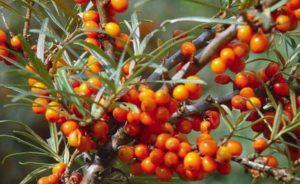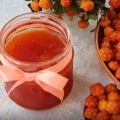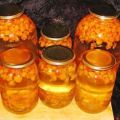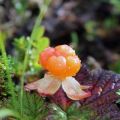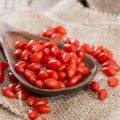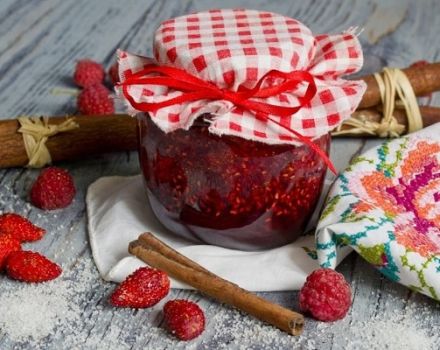The benefits and harms of petioles from cloudberries, properties and recipes for use in traditional medicine
Northern cloudberry is a distant relative of raspberries and blackberries; it grows on swampy soils, in the tundra. The berry is pampered, but very healthy. Healing not only fruits, but all parts of the plant: roots, stems, leaves. The health benefits of cloudberry petioles are difficult to overestimate. It is no coincidence that they are used in medicine and cosmetology.
Where does cloudberry grow and how are petioles harvested?
The berry has many names. It is called "royal", "northern orange", "swamp amber" and many others. Cloudberry is a herbaceous plant, low (no more than 30 cm in height), cold-resistant.
It tolerates frost more easily than strong winds or heavy rain. Sharp temperature jumps are detrimental to cloudberries:
- In our country, it grows in the northern regions, in tundra forests, in swamps.
- Found in Belarus, in the Leningrad region, Pskov, Bryansk. In Belarus, the berry was included in the Red Book, since there is little of it.
- In the Far East, residents know this berry, its useful qualities.
Outside of Russia, cloudberries grow in the Baltic republics, in the northern countries:
- Finland;
- Sweden;
- Norway;
- Canada.
The Finnish € 2 coin features a cloudberry, which proves its value.
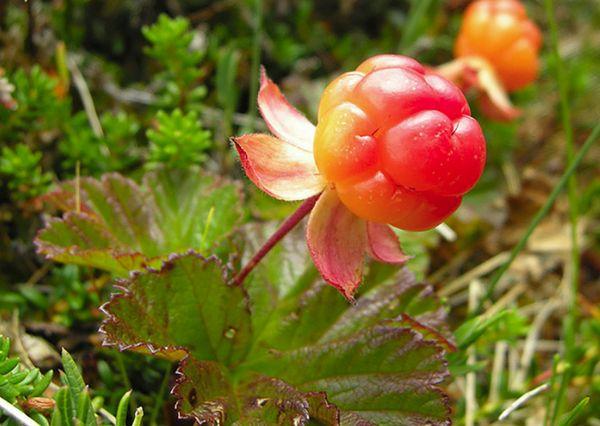
Each berry grows on a separate stalk, so it is impossible to collect in handfuls. Petioled cloudberry leaves are harvested in late spring or early summer, while buds are tied and during flowering.
The foliage is cut off from the bottom of the stem or from the middle, since the upper leaves did not have time to accumulate healing properties. Simultaneously with the leaves, flowers are collected with stalks.
Leaves, cuttings, plant roots are dried in an electric dryer or laid out in a dark place with good ventilation. Dried raw materials are placed in canvas bags or clean dry glass jars. Store where it is dry, cool and dark.
Dry cloudberry raw materials retain their medicinal properties for about two years.
When collected
At the end of July, the cloudberry harvest takes place in central Russia, but the plant is found there less and less. And in the northern regions, the berry ripens by mid-August.
Unripe fruits are reddish in color, ripe - bright yellow, even orange. It is necessary to have time to collect the miracle berry in 2 weeks. The fruits quickly overripe, in this state they cannot be collected, they will flow, will be unsuitable for transportation.
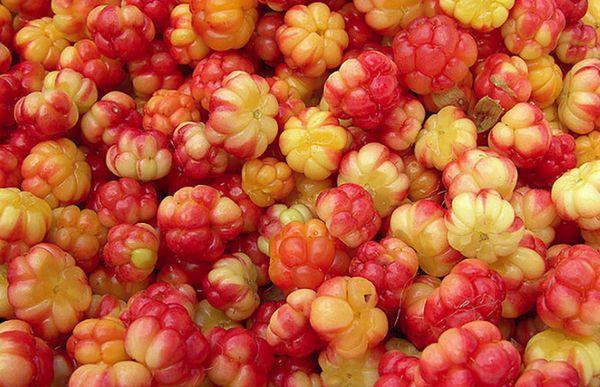
It is more convenient to pick the berry a little unripe, at home it will ripen in 3 days. A prerequisite for collection - the fruits are plucked together with the perianth (leaves with petioles around the fruit). They are dried, treated with a cough broth.
Useful properties of the plant
The taste of cloudberries is reminiscent of the taste of orange and currant. The berries are sour, so they are not eaten fresh.
The berry has become famous and in demand because of its beneficial qualities:
- It contains a large amount of vitamin C.
- Cloudberry fruit normalizes blood pressure, stabilizes blood circulation.
- They contribute to the elimination of free radicals from the body, increase the immune strength.
- Berries neutralize the harmful effects of bacteria and viruses.
- They normalize metabolism (metabolism), restore strength.
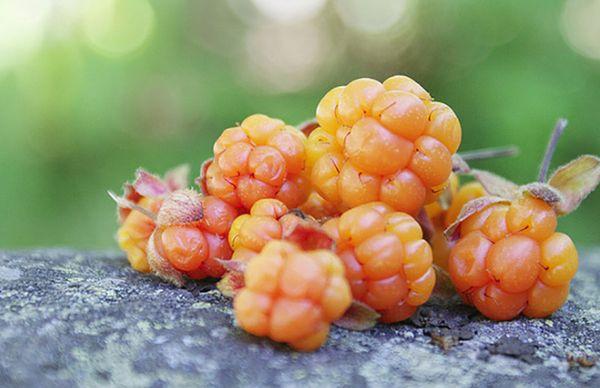
Cloudberry saved the inhabitants of the North from scurvy. Wounds and burns were also treated with tinctures, lotions from the miracle berry. For the preparation of medicinal drinks, decoctions, infusions, they used not only miracle fruits, but also leaves with petioles.
The beneficial properties of cloudberry cuttings are in no way inferior to fruits:
- restore immunity;
- improve mood;
- put a barrier to the blues;
- awaken the appetite;
- make vessels strong and strengthen the heart.
Petioles are a valuable cough medicine for bronchitis and colds. A decoction of dried petioles is an expectorant that removes phlegm.
Indications for use
The use of the miracle berry is not limited to folk remedies. It is widely used in traditional medicine, cosmetic industry:
- In case of flu, colds, bronchitis, cloudberry petioles are taken as an antipyretic, antifebrile, expectorant.
- Avitaminosis, chronic fatigue, decreased immunity, stress, loss of strength - indications for the use of cloudberry berries. It invigorates, strengthens.
- Development of rickets in children; Inhabitants of the north treat scurvy with broths, infusions on cloudberry petioles.
- The plant is effective for diseases of the cardiovascular system, lowering "bad" cholesterol, and high blood pressure.
- Disrupted metabolism, diseases of the gastrointestinal tract, diarrhea, dehydration are the reasons for using cloudberry medicines.
- Healing of wounds, burns will go away quickly if treated with cloudberries.
Frequent eating "northern orange" eliminates fermentation processes in the intestines, restores the natural microflora.
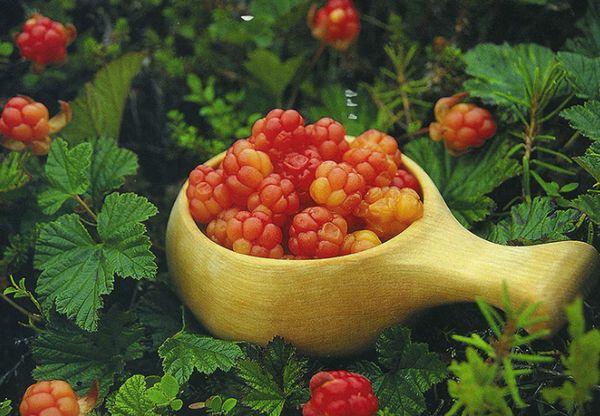
How to brew cloudberry leaves
Cough, whooping cough, bronchitis are treated with cloudberry tea. It is also effective in treating urinary tract infections, bringing down fever in colds.
For tea you will need:
- dried leaves with petioles - 1 glass;
- water - 250 ml.
Cooking.
- Dry cloudberry leaves are poured with boiling water. Cover, insist for several hours (3-4).
- They are filtering. Drink a quarter of a glass at least four times a day.
To enhance the healing effect, berries are added to tea. The drink will be more aromatic, tastier.
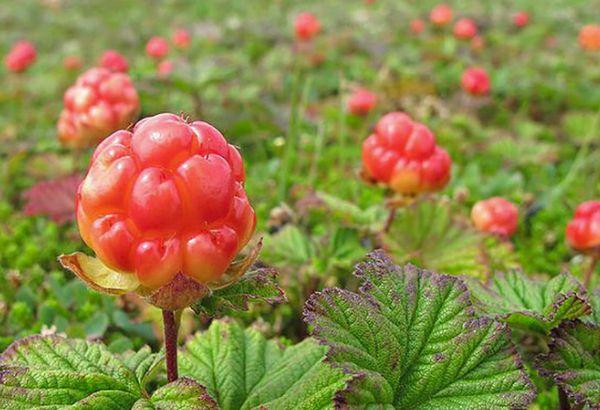
It is more convenient to prepare healing tea in a thermos. It gets stronger because the thermos stays warm longer. Sometimes, for the purpose of prevention, a handful of dry stalks are added to ordinary tea, it acquires an exquisite taste, aroma, and becomes useful.
Contraindications
Occasionally, there is an individual intolerance to cloudberries. It can cause an allergic reaction like hives. The culprit is organic acids, which are abundant in the plant.
"Swamp Amber" should not be consumed by people:
- with a diseased duodenum;
- stomach ulcer;
- enterocolitis;
- chronic gastritis;
- severe kidney disease.
Cloudberries are not taken with blood pressure medications. Before treatment, you should consult with your doctor.
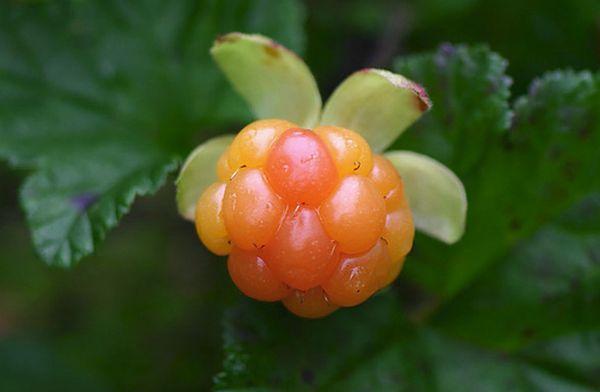
Procurement and storage
May, early June is the flowering period of the cloudberry plant. At this time, leaves and petioles are harvested. The berry picking time is limited to two weeks.
Collecting it is not easy. Sometimes you have to walk more than one kilometer until you find a clearing with a berry field.
You should not pick berries near busy roads, not far from industrial areas. The plant absorbs harmful fumes and substances. Such a berry will not bring any benefit, except harm.
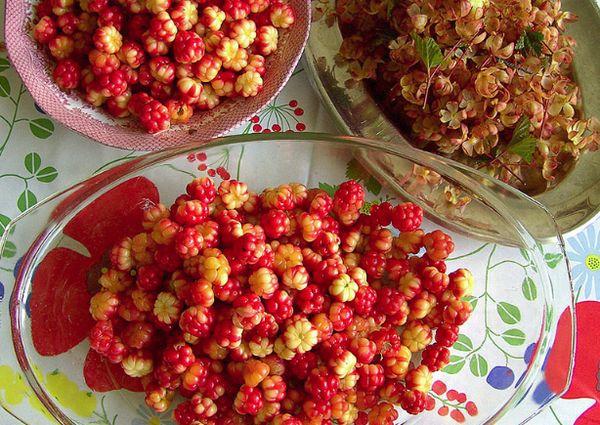
Cloudberries are harvested early in the morning or late afternoon to keep the weather dry. It is important to take anti-mosquito remedies with you, since there are always a lot of blood-sucking insects in places of growth (marshy).
Since the period for collecting cloudberries is limited, the berries do not last long. They are processed:
- dried;
- freeze;
- grind with sugar;
- make jam, jams, compotes
Soaked berry is stored for a long time (all winter).
It's not for nothing that cloudberries are called the royal berry. Of course, fresh berries are healthier than frozen or in the form of jam. But even in such a cloudberry there are many healing properties. Fragrant tea with stems in winter will help defeat any cold.
